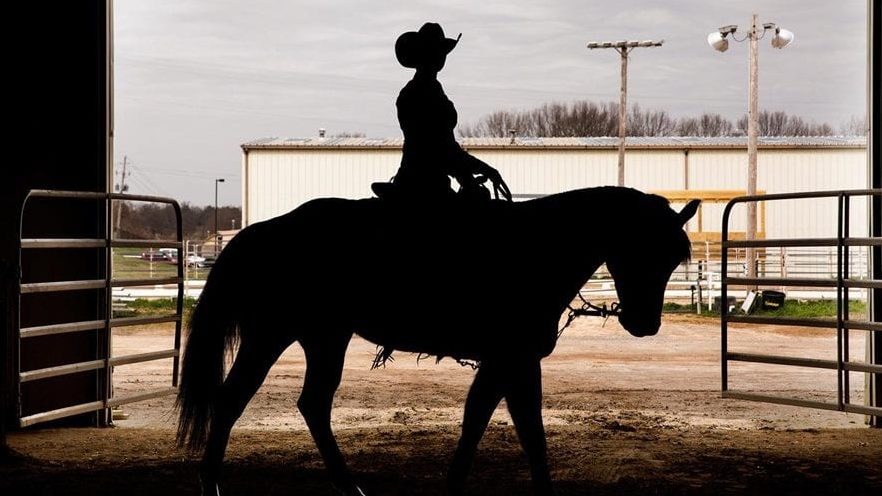Nearly all equestrian disciplines aim to create a partnership whereby the horse is responsive to the rider’s cues while remaining soft in the bridle. Indeed, nobody wants to spend time in the saddle fighting their horse, especially when the horse will always win in the battle of strengths.
We spoke to trainers across three disciplines, from Western Pleasure to Hunter Under Saddle to Ranch Riding, to get tips for helping your horse soften in the bridle.
Casey Willis – Casey Willis Show Horses
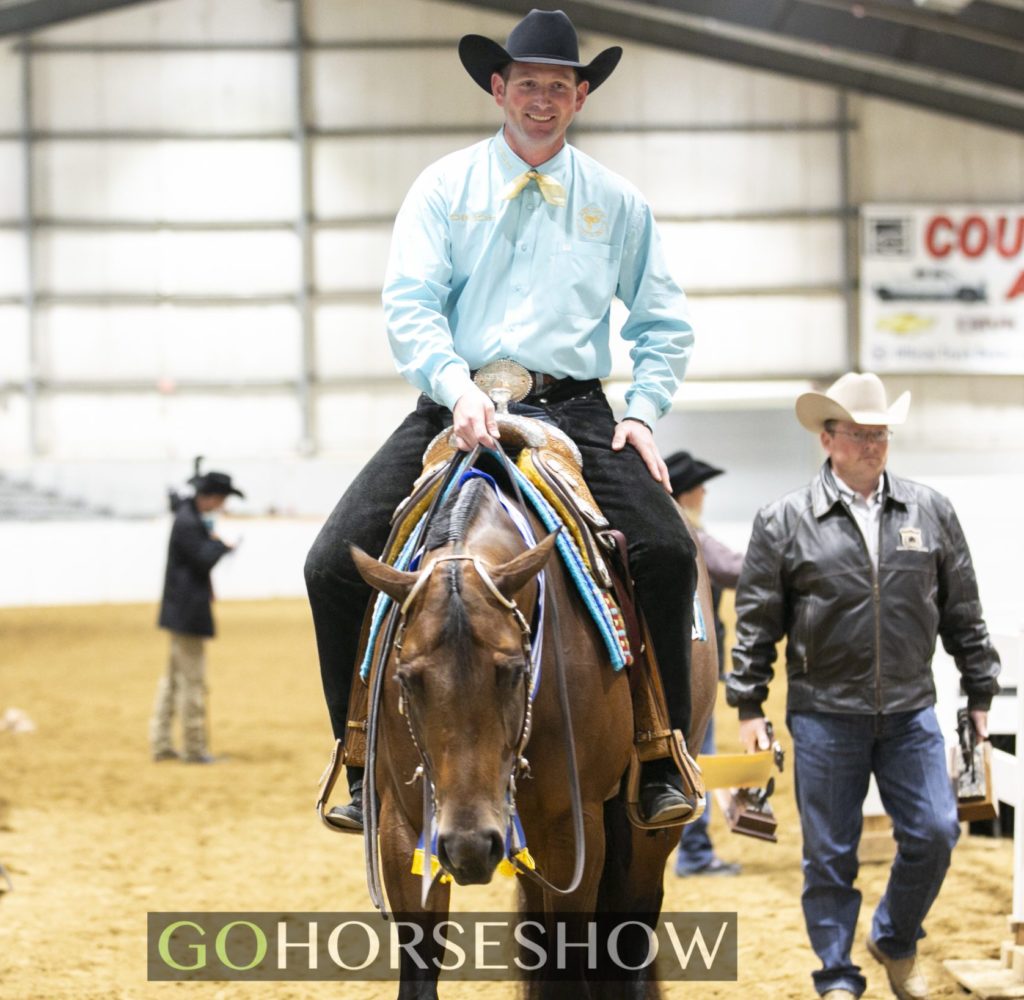 Willis agrees that the fundamental goal of riding, whether in the western pleasure context or out on a trial, is to have a soft, responsive horse. However, he believes western pleasure presents a unique issue when softening a horse because you are supposed to ride on a draped rein with little contact with the animal’s face.
Willis agrees that the fundamental goal of riding, whether in the western pleasure context or out on a trial, is to have a soft, responsive horse. However, he believes western pleasure presents a unique issue when softening a horse because you are supposed to ride on a draped rein with little contact with the animal’s face.
To soften his horses, Willis says he begins by making light contact. “You don’t want to immediately just start bumping or jerking on their face because it will encourage them to be harder.”
Willis observes that non-pro riders often will go right to a strong pull on the horse’s mouth, which only makes the horse fear contact and want to avoid it altogether. “Everything in western pleasure should be slow and soft…including your contact with their face. Hard and harsh contact will result in a hard and reactive animal.”
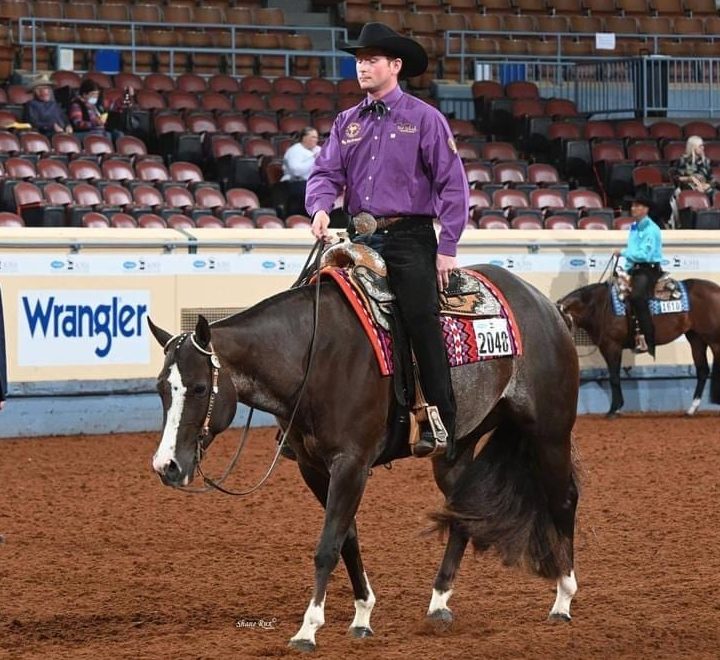 If the horse doesn’t respond to Willis’s light contact, he will go to his feet by rolling his spurs. “You want to lift the horse’s back, which has the natural biomechanical effect of making them soften up and drop their head and neck.”
If the horse doesn’t respond to Willis’s light contact, he will go to his feet by rolling his spurs. “You want to lift the horse’s back, which has the natural biomechanical effect of making them soften up and drop their head and neck.”
If that doesn’t work, Willis will begin “working laterals,” he describes as working on each side of the horse’s face at a time to get them to yield and soften in the bridle.
Willis reminds readers that there is more to having a soft horse than a harsh bit – it’s about being a “true horseman.”
If the horse continues to have an adverse reaction to efforts to soften its face, you should investigate other “root” issues: Does the horse have ulcers? Have its teeth been done? Have its wolf teeth been removed? Does it need its feet done or a correction to its shoeing? Does it require joint injections? Does it need a different feed program to reduce energy issues? Is the horse the type that needs a good longe before a ride?
A horse that fights contact will take time and patience, and every horse is unique. Therefore, Willis prefers a slow, thoughtful, and individualized approach to working with animals to make them more responsive.
Dawn Baker – Baker Futurity Horses
 Baker alters her approach to softening a hunt seat horse depending on their natural tendencies. “Every horse is an individual,” Baker emphasizes. “Some are naturally very soft in the bridle and sensitive in the mouth, while others are harder mouthed and heavier on their face.”
Baker alters her approach to softening a hunt seat horse depending on their natural tendencies. “Every horse is an individual,” Baker emphasizes. “Some are naturally very soft in the bridle and sensitive in the mouth, while others are harder mouthed and heavier on their face.”
Baker tends to use the same basic exercises regardless of the horse’s natural proclivities, but she will alter her equipment accordingly. For example, while every young horse is started in a rubber snaffle, she will adjust their equipment as she goes to achieve the ideal contact in the bridle.
“I tend to use a light curb on a heavier horse – nothing too harsh, but something to give me a little more leverage when I make contact, so they learn not to pull back too hard and respect my hands,” she explains. “For a lighter-mouthed individual, I tend to ride in a soft bit with short shanks and just a leather chin strap because I want to be able to make contact without scaring them.”
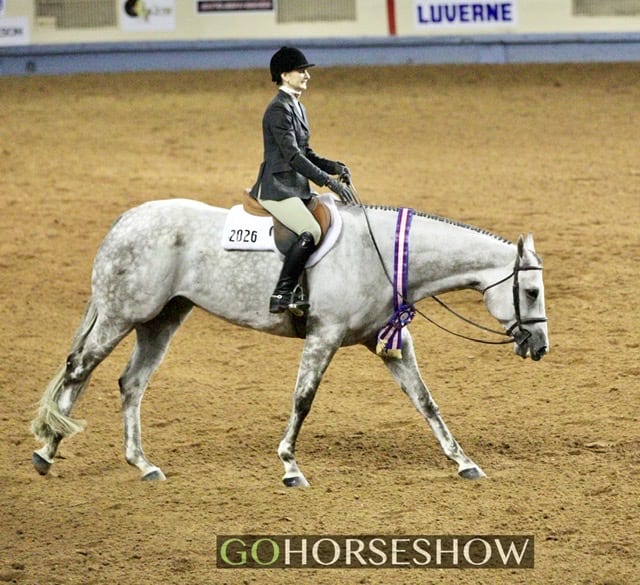 The goal of the hunter under saddle horse is to have them in a frame where their back is elevated, their neck is stretched out, and their nose is slightly pushed out, so they have light, constant contact with their rider. “You don’t when them pulling you around the arena,” Baker cautions, “but you want them to push into your hand when you take ahold so that you can maintain the proper contact. But, on the other hand, you don’t want them so light in the face that your reins are flopping around.”
The goal of the hunter under saddle horse is to have them in a frame where their back is elevated, their neck is stretched out, and their nose is slightly pushed out, so they have light, constant contact with their rider. “You don’t when them pulling you around the arena,” Baker cautions, “but you want them to push into your hand when you take ahold so that you can maintain the proper contact. But, on the other hand, you don’t want them so light in the face that your reins are flopping around.”
One way Baker works to get her horses soft is by moving their bodies around without needing to go to their faces. “I like to work my legs and move their shoulders around without pulling them in the direction I want them to move.”
Baker will have her horse’s track side-to-side by using her right rein and right leg to get the horse to move over to the left while keeping their head and neck mostly level, with just enough bend to see their left eye. Then, she repeats the process moving back and forth to get the horse to use its body without needing to pull on its face.
Baker reminds readers, “Don’t overcomplicate it. Keep it simple and black and white. If the horse is comfortable in a certain spot, that’s the spot you can gain from. But you can’t put them in a spot they’re uncomfortable and expect them to stay there.”
Marty Simper – Marty Simper Show Horses
 Simper believes the best way to make your horse soft in the bridle is by building on a positive foundation of responsiveness.
Simper believes the best way to make your horse soft in the bridle is by building on a positive foundation of responsiveness.
Simper likes to start his horses and riders by getting them soft and responsive at the walk, the trot, and the lope. “If you can’t do it slow and correct, then you can’t do it fast and correct,” Simper warns.
Despite how broke a horse is, Simper begins all his rides by reinforcing softness. “If they are braced in the body, they will brace through the face. So, I start my rides by having them yield all over their body, which encourages a softer face.”
Simper will start each ride by bending the horse’s nose around and picking up his inside rein while using his inside rein to keep their shoulder upright and his outside leg to drive them forward.
He will work on bending and counter-bending until the horse is loose and responsive. If the horse responds quickly, then he moves on to other work. However, if the horse fights it, the whole ride may focus strictly on performing the bends properly.
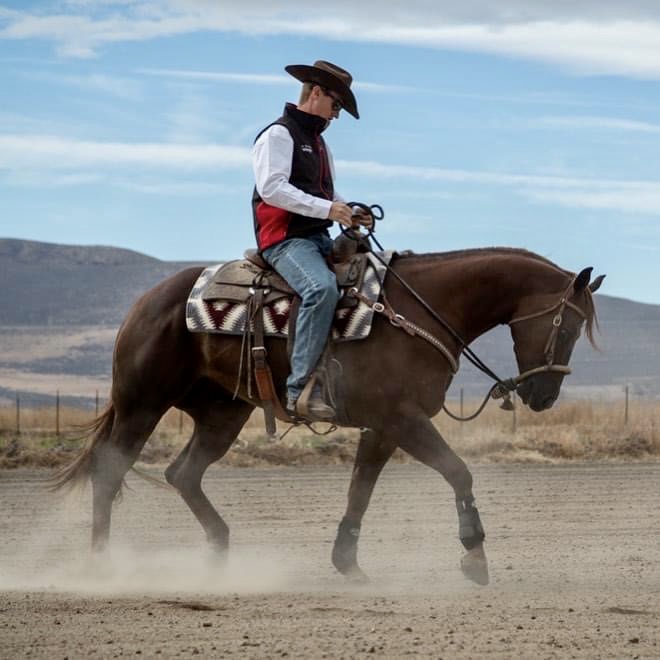 Simper also focuses on backing his horses around bends and in circles or squares to get them to sit on their butt and yield in their face. Then, he will use his legs and seat to drive them into the bridle and reward the horse for staying soft and setting into his hand.
Simper also focuses on backing his horses around bends and in circles or squares to get them to sit on their butt and yield in their face. Then, he will use his legs and seat to drive them into the bridle and reward the horse for staying soft and setting into his hand.
Simper believes a good transition is critical for all disciplines but acknowledges many up and downshifts in ranch riding. Therefore, he believes that soft changes become even more essential in a ranch class where they are a big part of the patterns.
Ultimately, Simper believes that body control is the key to face control. If you can keep their body correct through each gait, transition, stopping, backing, and moving laterally, you will have a naturally soft horse and not “bracey” in the face.
Horses need to be in good physical shape to lift their back, sit on their hind end, and yield through their face. “You can’t expect them to respond if they aren’t physically capable of doing what you ask – that will make them sour.”
Simper summarizes, “To have a horse stay soft through the bridle, you need to condition their body to allow the yield. It would be best if you also built their confidence so that they understand what you expect from them in the first place. It is critical to teach them what you want to know about when to apply for pressure and release. You want them to understand what to do when you go to your hand, not to fear it.”


